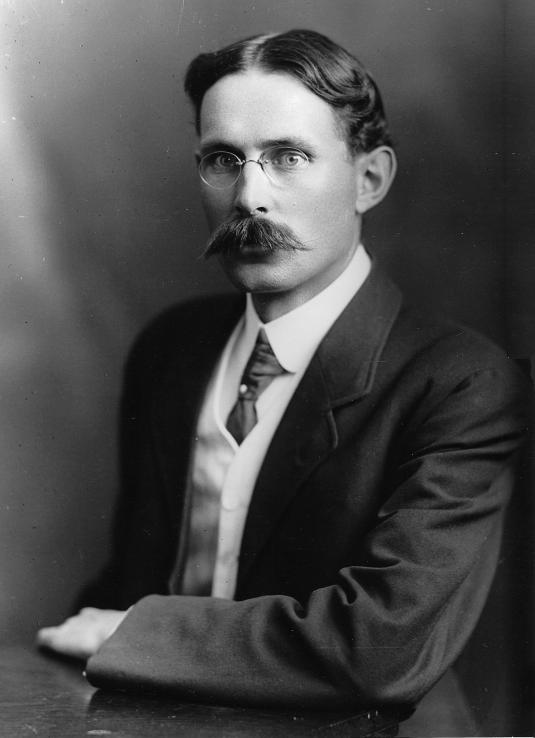Art and Culture
Government of Canada Announces Two New National Historic Designations

FILE: Photograph, Frederick G. Todd, Montreal, QC, 1909 (Photo by Wm. Notman & Son – This image is available from the McCord Museum under the access number II-175018This tag does not indicate the copyright status of the attached work. A normal copyright tag is still required. See Commons:Licensing for more information., Public Domain)
Frederick Gage Todd and the Former Paris Town Hall recognized for their national historic significance
OTTAWA, ON, Oct. 21, 2020 /CNW Telbec/ – National historic people, places, and events reflect the rich and varied heritage of our country and provide an opportunity for Canadians to learn more about our diverse history.
The Minister of Environment and Climate Change and Minister responsible for Parks Canada, the Honourable Jonathan Wilkinson, today announced two new designations under the National Program of Historical Commemoration. The new designations recognize Frederick Gage Todd as a person of national historic significance and the Former Paris Town Hall as a national historic site.
Frederick Gage Todd was Canada’s first professional landscape architect and popularized the idea of naturalistic open space in Canadian cities. Todd designed some of the country’s most beloved urban parks, including Assiniboine Park in Winnipeg (1904-06), Bowring Park in St. John’s, Newfoundland (1912-14), and National Battlefields Park (Plains of Abraham) in Québec City.
Now known as the Bawcutt Centre, the Former Paris Town Hall is located in what was once considered the centre of the town of Paris, Ontario. The Former Paris Town Hall is a rare Canadian example of a civic building in the Gothic Revival style. It is distinguished by the presence of medieval architectural details, including the magnificent wooden structure of the large hall on its second floor. Built in 1854, it remains a monument to civic pride, constructed during a period of ambitious growth when the small community of Paris emerged as an industrial town.
The Government of Canada, through the Historic Sites and Monuments Board of Canada, recognizes significant persons, places, and events that have shaped our country as one way of helping Canadians connect with their past. By sharing these stories with Canadians, we hope to foster understanding and reflection on the diverse histories, cultures, legacies, and realities of Canada’s past and present.
The designation process under Parks Canada’s National Program of Historical Commemoration is largely driven by public nominations. To date, more than 2,150 designations have been made nationwide. To nominate a person, place or historical event in your community, please visit the Parks Canada website for more information: https://www.pc.gc.ca/en/culture/clmhc-hsmbc/ncp-pcn/application.
Quotes
“On behalf of the Government of Canada, I am pleased to recognize the national historic significance of Frederick Gage Todd and the Former Paris Town Hall. By honouring the persons, places and events that matter to us, historic designations help to share our rich and diverse heritage with Canadians all across the country. I encourage all Canadians to help shape the stories we share by submitting their own nominations for national historic designation and to visit this network of heritage places to discover and connect with our diverse history.”
The Honourable Jonathan Wilkinson,
Minister of Environment and Climate Change and Minister responsible for Parks Canada
“The work of landscape architect Frederick Gage Todd can still be viewed across Canada today, from Vancouver to St. John’s, demonstrating how Todd’s designs were visionary for their time. The breadth of Todd’s influence, the wisdom of his proposals, and the clarity of his foresight are exemplified by the fact that most of his work – and that of his successors – now forms an accepted and endearing part of the Canadian urban landscape. The driveway system used in Ottawa, the concept of Gatineau Park, the importance of the waterways, and the symbolism of Parliament Hill were first put forward by Todd, and he promoted the important concept of open urban space as exemplified by his earliest work with Frederick Law Olmsted to create Parc Mount Royal for Montréal in 1874.”
Hope Parnham, President, Canadian Society of Landscape Architects (CSLA)
“We are so pleased to learn the Former Paris Town Hall will be designated as a national historic site. This designation helps to ensure the preservation and improvement of an incredible part of the County of Brant’s history. This building and location represent important stories from our community’s past and its people. The recognition also helps support the ongoing efforts made by many people over the years to protect and appreciate our fascinating history in the County.”
Mayor David Bailey,
County of Brant
Quick facts:
- Parks Canada manages a nation-wide network of 171 national historic sites, 47 national parks, one national urban park, and five national marine conservation areas.
- Created in 1919, the Historic Sites and Monuments Board of Canada advises the Minister of Environment and Climate Change regarding the national significance of persons, places, and events that have marked Canada’s history. Together with Parks Canada, the Board ensures that subjects of national historic significance are recognized and these important stories are shared with Canadians.
- The system of national historic sites and designations in Canada helps to tell the stories of who we are and connect us to our past, enriching our understanding of ourselves, each other, and our country. Heritage places provide a wide range of cultural, social, economic, and environmental benefits to their communities.
- Parks Canada is committed to working with Canadians in our efforts to tell broader, more inclusive stories in the places that it manages. In support of this goal, the Framework for History and Commemoration, outlines a new, and engaging approach to sharing Canada’s history through diverse perspectives, including shedding light on tragic and difficult periods of Canada’s past.





















